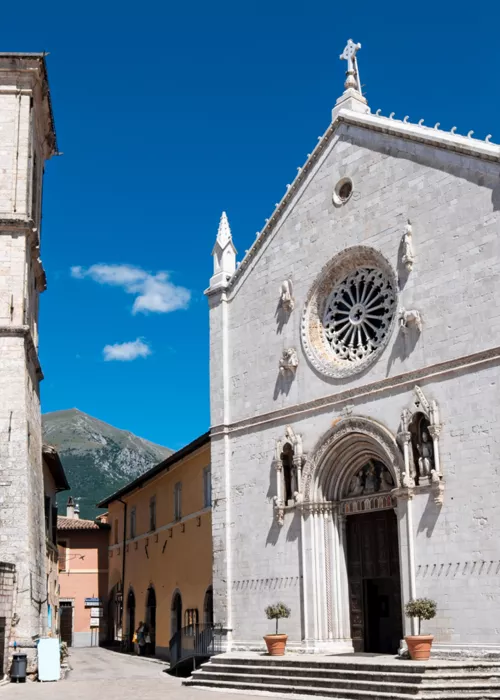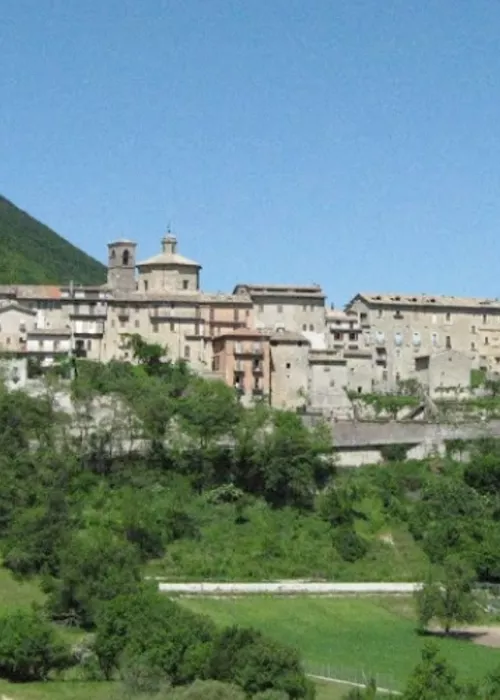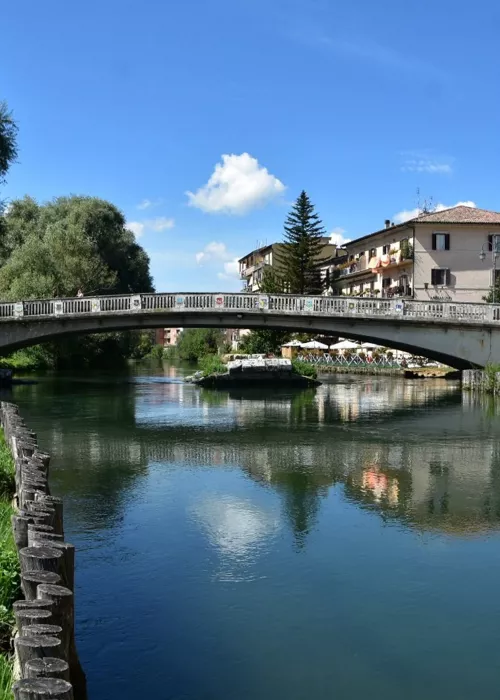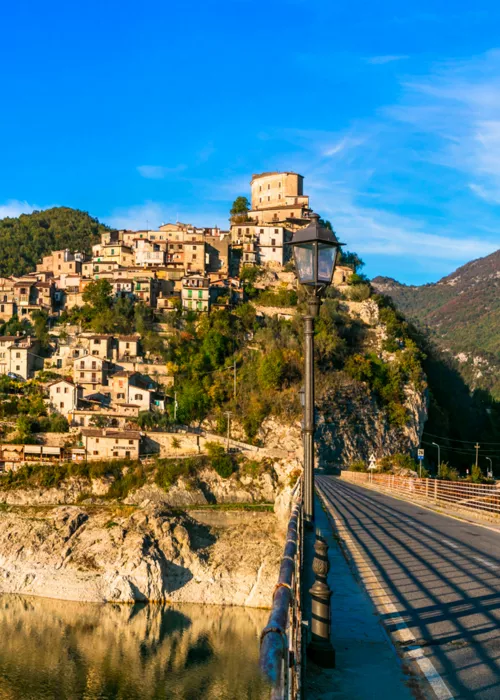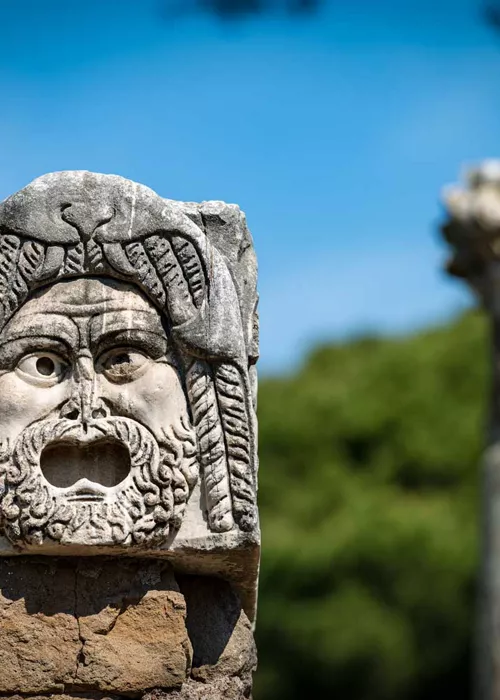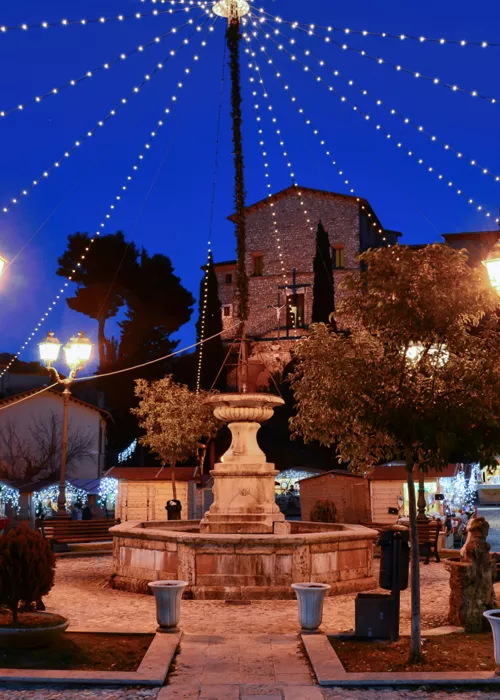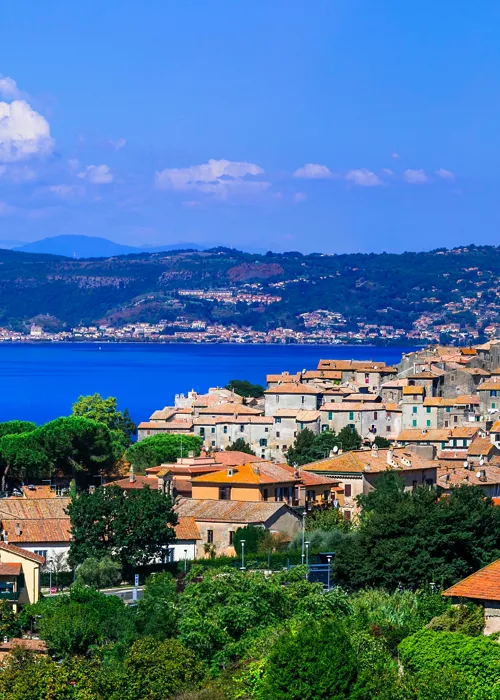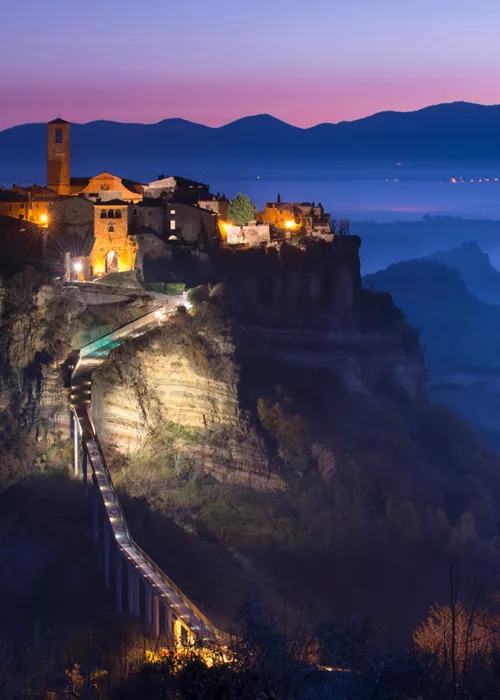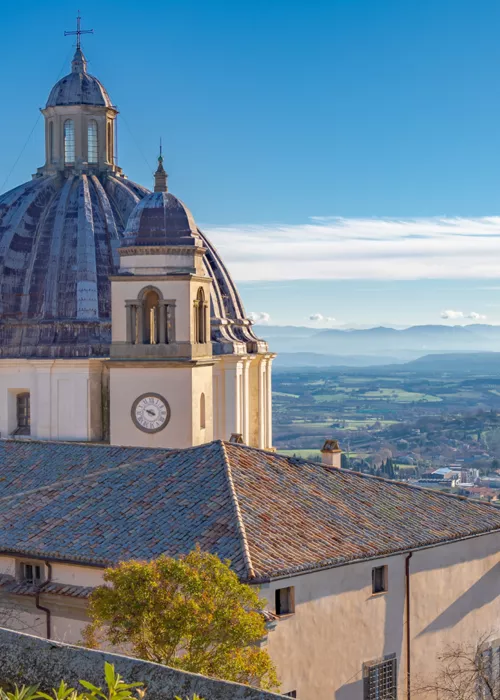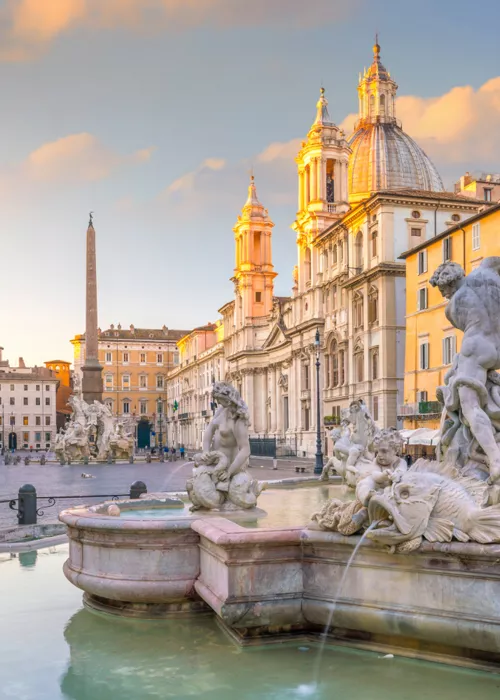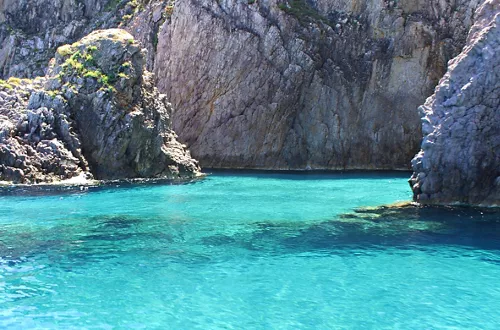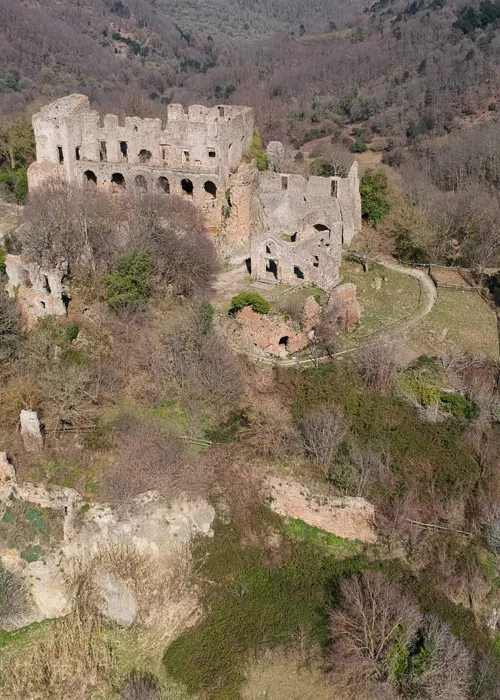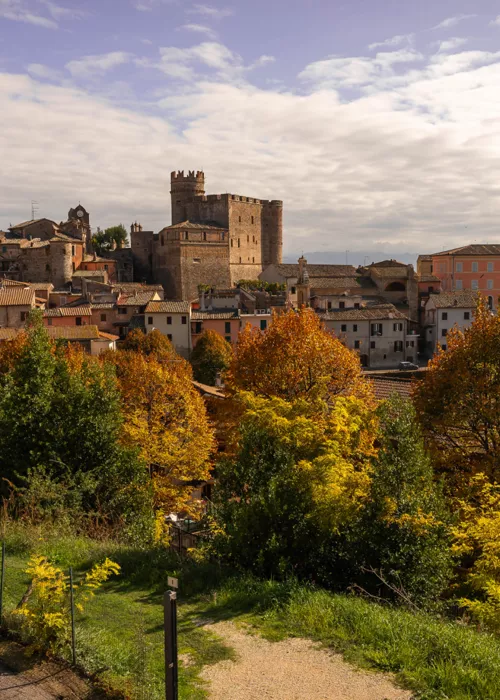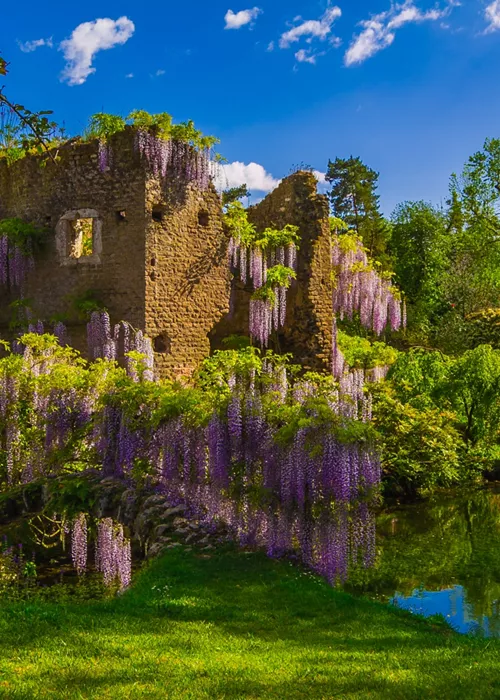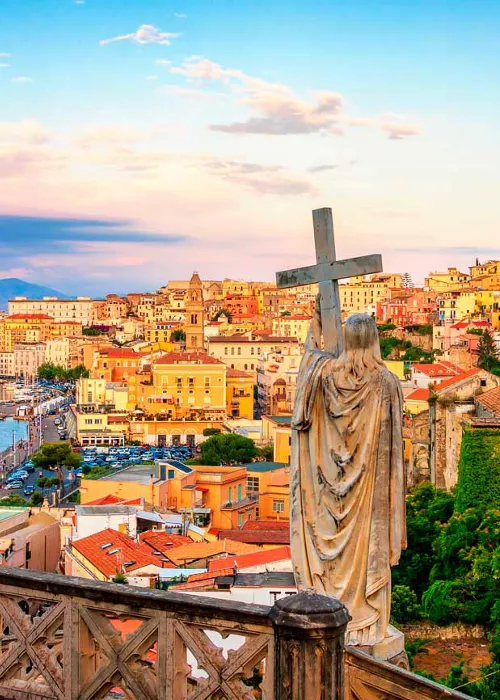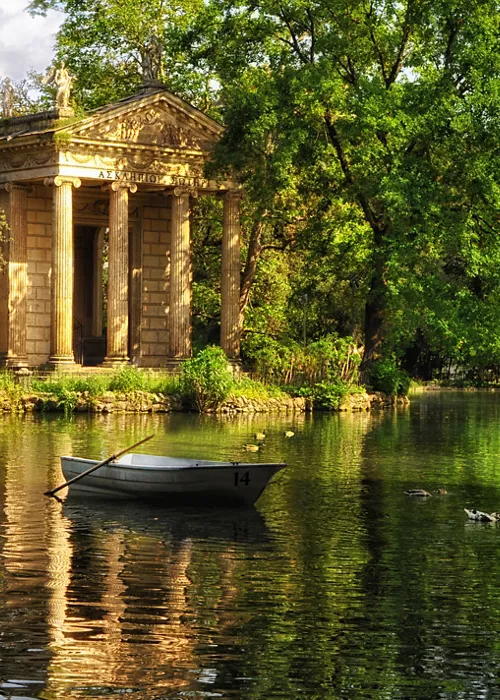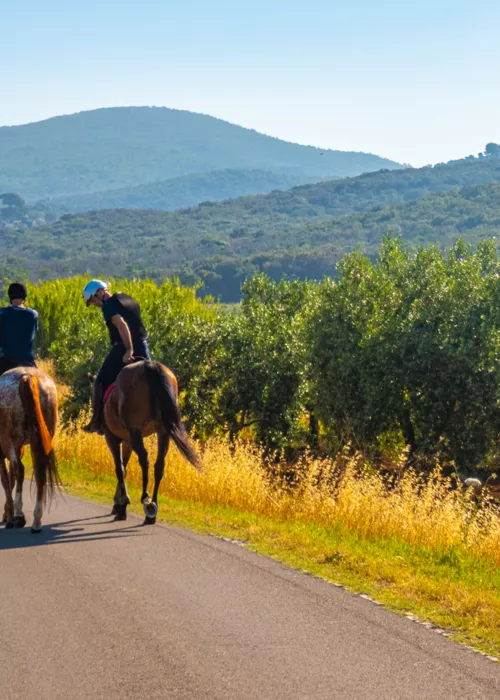Lazio: The Way of Saint Benedict
4 minutes

The Cammino di San Benedetto stretches over 300 kilometres on foot, and 40 more by bicycle or on horseback, in the green heart of Italy. The Cammino is a pilgrimage route following in the footsteps of Saint Benedict of Norcia, the founder of western monasticism and author of the Benedictine Rule. Retracing his footsteps, travellers can take inspiration from the Saint’s life and teachings while enjoying the scenic and artistic beauty of this enchanting area.
The Cammino, via paths, cart tracks and quiet roads, connects the three locations from the Benedictine movement: Norcia, Subiaco and Montecassino.
The joy of encountering friendly local inhabitants, the small hidden treasures and tiny, welcoming villages, the food and wine culture and much more besides make this route an everyday, peaceful and sacred expedition.
Umbria, the green heart of Italy

The Cammino starts in Norcia, a charming town at the foot of the Sibillini mountains, home to the Basilica of St. Benedict with its beautiful Gothic façade, enriched by a doorway, a rose window and friezes depicting the four Evangelists. Passing over low hills, surrounded by unspoilt nature, you will reach Cascia, once home to Saint Rita, the saint of the impossible. Don't miss the village of Roccaporena with the House of Rita, the adjacent Orchard of the Miracle, where a rose blossomed and two figs ripened in the middle of winter, and the 13th-century Church of San Montano, where Saint Rita was married.
Monteleone di Spoleto, the next stop, is a charming medieval village with a pastoral landscape.
From the picturesque Upper Rieti Valley to the magical Turano Valley
_1600x1000?wid=800&hei=500&fit=constrain,1&fmt=webp)
Leonessa, the first municipality on entering the Lazio region, is a beautiful ancient town at the foot of the Reatini mountains and a wonderful blend of Medieval and Renaissance architecture. In the village of Margaret of Parma, remembered in the historical re-enactment of the Palio del Velluto in period costume, you can taste typical products such as spelt, truffles and potatoes, the latter celebrated every second Sunday in October in a festival in their honour. Through the extensive beech woods of the Vallonina valley, we then cross the Reatini Mountains, arriving in Poggio Bustone, an important Franciscan location known as the birthplace of one of Italy’s most famous singer-songwriters, Lucio Battisti, to whom a museum and park, with a panoramic terrace, have been dedicated, named after his famous song, I Giardini di Marzo. We then reach Rieti, a papal and Franciscan town, and travel up along the Turano River to the ‘Castle of the Metamorphoses’ in Rocca Sinibalda.
In Castel di Tora, one of the most beautiful villages in Italy, perched above Lake Turano, you can taste the ‘green gold’ of the Sabina region, home to the highest olive groves in the Rieti area. Indeed, this place, at an altitude of 800 metres, produces a PDO extra virgin olive oil with a unique flavour.
Passing through the hills overlooking Lake Turano, we reach Pozzaglia Sabina, the birthplace of Saint Agostina, patron saint of nurses.
Crossing the plain featuring the evocative ruins of the Church of Santa Maria del Piano, you arrive in Orvinio, with its imposing castle, listed among the most beautiful villages in Italy, in the unspoilt natural setting of the Lucretili Mountain nature reserve.
From the Aniene Valley to the Simbruini Mountains and from Subiaco to Montecassino in Ciociaria

The approach to the picturesque Aniene Valley is through Mandela and Vicovaro, the latter home to recently-restored caves where Sant Benedict lived spent a brief period of his life.
However, Subiaco is the superlative place where the Saint had his first experience as a hermit, in the Sacro Speco, and founded the first monasteries, including the Monastery of St. Scholastica, one of Subiaco’s most famous Benedictine sanctuaries.
Passing through a cool, green gorge, we reach Trevi nel Lazio, at the foot of the Simbruini Mountains, then continuing towards the Ernici Mountains, covered with lush woodlands surrounding the picturesque medieval villages of Vico nel Lazio, likened to the French town of Carcassonne due to its walls with crenellated towers and gates, and Collepardo, home to both the beautiful Carthusian Monastery of Trisulti, a picturesque monastic complex dating back to the 13th century, and the large chasm known as the Pozzo d'Antullo, an original example of a karst event.
From there we continue until we reach the River Liri , first visiting the Cistercian Abbey of Casamari, a rare and beautiful example of Gothic-Cistercian architecture in Italy, and then the town of Arpino, harking back to classical times with its charming old town centre and imposing acropolis. After Arpino, travellers enter the magnificent gorges of the Melfa River, a place of solitude and beauty, home to hermits in ancient times and now inhabited by numerous birds of prey, including eagles. The last stage passes the village of Roccasecca, birthplace of St. Thomas Aquinas, then arriving at Montecassino Abbey, the cradle of Cistercian monasticism, founded in 529 AD by Saint Benedict of Norcia.


